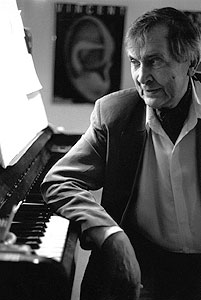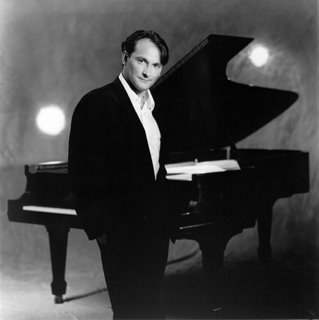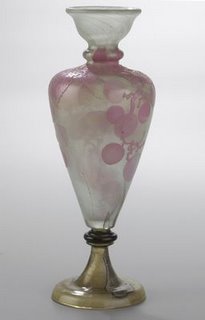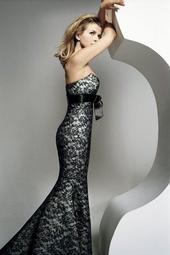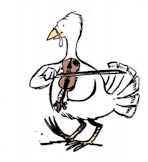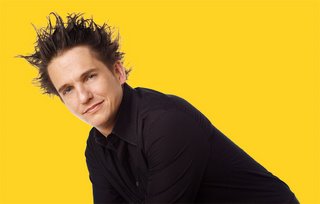Last month | Next monthClassical Month in Washington is a monthly feature that appears on the first of the month. If there are concerts you would like to see included on our schedule, send your suggestions by e-mail (ionarts at gmail dot com). Happy listening!January 1, 2007 (Mon)
3 pmNew Year's ConcertStrauss Symphony of America, National Ballet of Hungary
Kennedy Center Concert Hall
January 3, 2007 (Wed)
5:30 pmMasterclass with Henning Kraggerud, violinistStrathmore (Education Center Room 309)
January 4, 2007 (Thu)
8 pmBaltimore Symphony OrchestraWith violinist Henning Kraggerud (Brahms, violin concerto) and conductor Roberto Abbado
Music Center at Strathmore
Review -- Jens F. Laurson (
Ionarts, January 5)
January 5, 2007 (Fri)
8 pmThe Elizabethan MuseFolger Consort
Washington National CathedralReview -- Charles T. Downey (Ionarts, January 6)
January 6, 2007 (Sat)
1 and 3 pmNSO Teddy Bear Concert: Imagination DuoGlenn Donnellan and Jan Chong
Kennedy Center Family Theater
January 6, 2007 (Sat)
8 pmThe Elizabethan MuseFolger Consort
Washington National CathedralJanuary 7, 2007 (Sun)
1 and 3:30 pmNSO Ensemble Concert: Math and MusicYvonne Caruthers, cello
Kennedy Center Family Theater
January 7, 2007 (Sun)
4 pmCalefax (woodwind quintet) with Irina Nuzova (piano) [FREE]
Phillips CollectionReview -- Joe Banno (
Washington Post, January 9)
January 7, 2007 (Sun)
6 pmTwelfth Night: Epiphany and the Winter Solstice
Armonia NovaChrist Church (Alexandria, Va.)
January 7, 2007 (Sun)
6:30 pmNational Gallery Orchestra (Hobart Earle, guest conductor) [FREE]
Waltzes and polkas by Johann Strauss and other Viennese composers
National Gallery of ArtJanuary 7, 2007 (Sun)
7 pmChoral Tribute to Martin Luther King, Jr.Choral Arts Society of Washington
Kennedy Center Concert Hall
Review -- Ronni Reich (
Washington Post, January 9)
January 11, 2007 (Thu)
7 pmNational Symphony OrchestraWith Leila Josefowicz (Hindemith, violin concerto)
Kennedy Center Concert Hall
Review -- Jens F. Laurson (
Ionarts, January 12)
January 11, 2007 (Thu)
8 pmBaltimore Symphony OrchestraPeabody Sesquicentennial Celebration (Marin Alsop, conductor)
Music by Strauss, Stravinsky
Meyerhoff Hall (Baltimore, Md.)
Review -- Tim Page (
Washington Post, January 12)
January 12, 2007 (Fri)
7 pmNational Symphony OrchestraWith Leila Josefowicz (Hindemith, violin concerto)
Kennedy Center Concert Hall
January 12, 2007 (Fri)
8 pmBaltimore Symphony OrchestraPeabody Sesquicentennial Celebration (Marin Alsop, conductor)
Meyerhoff Hall (Baltimore, Md.)
January 12, 2007 (Fri)
8 pmSymphonica Toscanini with Loren MaazelGeorge Mason University Center for the Arts (Fairfax, Va.)
Review -- Mark J. Estren (
Washington Post, January 15)
January 13, 2007 (Sat)
1 pmTrio SarastroMusic by Henselt and Mendelssohn
The Lyceum (Alexandria, Va.)
January 13, 2007 (Sat)
7:30 pmAlan Toda-Ambaras, celloWith Misako Toda (piano), Daniel Austrich (violin), with Ilya Friedberg (piano)
Mansion at Strathmore
Review -- Joan Reinthaler (
Washington Post, January 15)
January 13, 2007 (Sat)
7:30 pmCountertop QuartetSt. Paul's Episcopal Church (2430 K Street NW)
January 13, 2007 (Sat)
8 pmBaltimore Symphony OrchestraWith Marin Alsop (Strauss, Alpine Symphony; Stravinsky, Rite of Spring)
Music Center at Strathmore
January 13, 2007 (Sat)
8 pmNational Symphony OrchestraWith Leila Josefowicz (Hindemith, violin concerto)
Kennedy Center Concert Hall
January 14, 2007 (Sun)
3 pmBaltimore Symphony OrchestraPeabody Sesquicentennial Celebration (Marin Alsop, conductor)
Meyerhoff Hall (Baltimore, Md.)
January 14, 2007 (Sun)
4 pmAmadeus Trio [FREE]
Phillips CollectionReview -- Joe Banno (
Washington Post, January 16)
January 14, 2007 (Sun)
3 pmRome Trio [FREE]
Reynolds Center for American Art and ArchitectureJanuary 14, 2007 (Sun)
6:30 pmEllen Hargis (soprano) and Paul O’Dette (lute)
Music from the time of Shakespeare
National Gallery of ArtReview -- Charles T. Downey (
Ionarts, January 16)
January 16, 2007 (Tue)
6 pmBarbara Hollinshead (mezzo-soprano) and Howard Bass (lute) [FREE]
Songs from Shakespeare's Troupe
Kennedy Center Millennium StageJanuary 16, 2007 (Tue)
7:30 pmProkofiev, Romeo and JulietKirov Ballet
Kennedy Center Concert Hall
Review -- Charles T. Downey and Jens F. Laurson (
Ionarts, January 18)
January 16, 2007 (Tue)
7:30 pmDilyana Korova (bassoon), with Ivo Kaltchek (piano), Noor Jihan (dancer), and Joseph Connell (percussion)
Beethoven Society of AmericaGerman Embassy (4645 Reservoir Road NW)
January 17, 2007 (Wed)
7:30 pmProkofiev, Romeo and JulietKirov Ballet
Kennedy Center Concert Hall
January 18, 2007 (Thu)
7 pmNational Symphony OrchestraRichard Strauss,
Salome (Deborah Voigt, Alan Held)
Kennedy Center Concert Hall
Review -- Jens F. Laurson (
Ionarts, January 20)
January 18, 2007 (Thu)
7:30 pmProkofiev, Romeo and JulietKirov Ballet
Kennedy Center Concert Hall
January 19, 2007 (Fri)
7 pmNSO Kinderkonzert: Strings and StoriesKennedy String Quartet
Kennedy Center Family Theater
Review -- Stephen Brookes (
Washington Post, January 22)
January 19, 2007 (Fri)
7:30 pmProkofiev, Romeo and JulietKirov Ballet
Kennedy Center Concert Hall
January 19, 2007 (Fri)
7:30 pmThe Artistry of Thomas Stewart [FREE]
Presented by Tim Page (
Washington Post)
Wagner Society of Washington, D.C.Funger Hall, George Washington University (2201 G Street NW)
January 19, 2007 (Fri)
7:30 pmSergei Leiferkus (baritone) and Vera Danchenko-Stern (piano)
La Maison Française (4101 Reservoir Road NW)
January 19, 2007 (Fri)
8 pmHandel,
Acis and GalateaAmerican Opera Theater (formerly Ignoti Dei Opera)
Baltimore Theater ProjectReview -- Charles T. Downey (
Ionarts, January 22)
January 19, 2007 (Fri)
8 pmLaufman-Kurkowicz-Laufman TrioCorcoran Gallery of Art
January 19, 2007 (Fri)
8 pmZephyros WindsWoodwind quintets by Danzi, Britten, Debussy, Hindemith, Barber, Ravel
Dumbarton Oaks,
Friends of Music seriesJanuary 20, 2007 (Sat)
1:30 pmNational Symphony OrchestraRichard Strauss,
Salome (Deborah Voigt, Alan Held)
Kennedy Center Concert Hall
January 20, 2007 (Sat)
1:30 and 7:30 pmProkofiev, Romeo and JulietKirov Ballet
Kennedy Center Concert Hall
January 20, 2007 (Sat)
6 pmClassic Ko Ensemble [FREE]
Kennedy Center Millennium StageJanuary 20, 2007 (Sat)
8 pmHandel,
Acis and GalateaAmerican Opera Theater (formerly Ignoti Dei Opera)
Baltimore Theater ProjectJanuary 20, 2007 (Sat)
8 pmNational PhilharmonicBrian Ganz, piano (Shostakovich, first piano concerto)
Music Center at Strathmore
Mark J. Estren (
Washington Post, January 22)
January 20, 2007 (Sat)
8 pmSt. Petersburg String Quartet
Dumbarton ConcertsDumbarton United Methodist Church (3133 Dumbarton Street NW)
Review -- Joan Reinthaler (
Washington Post, January 22)
January 20, 2007 (Sat)
8 pmZephyros WindsWoodwind quintets by Danzi, Britten, Debussy, Hindemith, Barber, Ravel
Dumbarton Oaks,
Friends of Music seriesJanuary 21, 2007 (Sun)
1:30 pmProkofiev, Romeo and JulietKirov Ballet
Kennedy Center Concert Hall
January 21, 2007 (Sun)
1 and 3:30 pmNSO Kinderkonzert: Strings and StoriesKennedy String Quartet
Kennedy Center Family Theater
January 21, 2007 (Sun)
3 pmHandel,
Acis and GalateaAmerican Opera Theater (formerly Ignoti Dei Opera)
Baltimore Theater ProjectJanuary 21, 2007 (Sun)
3 and 7:30 pmMusica PacificaMansion at Strathmore
Review -- Stephen Brookes (
Washington Post, January 23)
January 21, 2007 (Sun)
4 pmSpenser Myer, piano [FREE]
Phillips CollectionJanuary 21, 2007 (Sun)
4 pmGospel Mass ChoirWashington Performing Arts Society
Kennedy Center Concert Hall
Review -- Cecelia Porter (
Washington Post, January 23)
January 21, 2007 (Sun)
6:30 pmThe Baltimore Consort
Music from the time of Shakespeare
National Gallery of ArtJanuary 21, 2007 (Sun)
7 pmZephyros WindsWoodwind quintets by Danzi, Britten, Debussy, Hindemith, Barber, Ravel
Dumbarton Oaks,
Friends of Music seriesJanuary 21, 2007 (Sun)
7:30 pmKalichstein-Laredo-Robinson Trio, with violist Kirsten JohnsonU.S. premiere of Richard Danielpour, Piano Quartet
Fortas Chamber Music Series
Kennedy Center Terrace Theater
Review -- Daniel Ginsberg (
Washington Post, January 23)
January 22, 2007 (Mon)
8 pmNational Symphony OrchestraRichard Strauss,
Salome (Deborah Voigt, Alan Held)
Kennedy Center Concert Hall
January 24, 2007 (Wed)
7:30 pmHilliard Ensemble [FREE]
Music by Arvo Pärt, Jonathan Wild, Alexander Raskotiv, and others
Freer Gallery of ArtReview -- Charles T. Downey (
Ionarts, January 26)
January 24, 2007 (Wed)
7:30 pmHamburg SymphonyWith Robert McDuffie, violin
Music by Mendelssohn, Tchaikovsky, Brahms
Music Center at Strathmore
Review -- Daniel Ginsberg (
Washington Post, January 26)
January 24, 2007 (Wed)
8 pmYuri Bashmet, Wu Man, and the Moscow Soloists [FREE]
Music by Takemitsu, Tan Dun, and Hiyashi
Library of CongressReview -- Jens F. Laurson (
Ionarts, January 30)
January 25, 2007 (Thu)
7 pmNSO Pops: Music of Duke EllingtonWith Doc Severinsen, conductor and trumpet
Kennedy Center Concert Hall
Review -- Stephen Brookes (
Washington Post, January 27)
January 25, 2007 (Thu)
8 pmHandel,
Acis and GalateaAmerican Opera Theater (formerly Ignoti Dei Opera)
Baltimore Theater ProjectJanuary 26, 2007 (Fri)
7 pmNSO Pops: Music of Duke EllingtonWith Doc Severinsen, conductor and trumpet
Kennedy Center Concert Hall
January 26, 2007 (Fri)
7:30 pmSusan Graham, mezzo-soprano (with pianist Malcom Martineau)
Fortas Chamber Music series
Kennedy Center Terrace Theater
Review -- Jens F. Laurson (
Ionarts, January 29)
January 26, 2007 (Fri)
7:30 pmBaltimore Symphony Orchestra (Shakespeare Festival)
Music by Nicolai, Tchaikovsky, Elgar
Carlos Kalmar, guest conductor
Music Center at Strathmore
January 26, 2007 (Fri)
8 pmPuccini, ToscaBulgarian State Opera
George Mason University Center for the Arts (Fairfax, Va.)
Review -- Tom Huizenga (
Washington Post, January 29)
January 26, 2007 (Fri)
8 pmHandel,
Acis and GalateaAmerican Opera Theater (formerly Ignoti Dei Opera)
Baltimore Theater ProjectJanuary 26, 2007 (Fri)
8 pmParker String QuartetThe Barns at Wolf Trap
January 26, 2007 (Fri)
8 pmGreat Noise Ensemble: Dancing, Drumming and Re-Defining
Patricia M. Sitar Center for the Arts
January 27, 2007 (Sat)
1 and 3 pmNSO Teddy Bear Concert: Tunes 'n' TalesMarissa Regni (violin) and Dotian Levalier (harp)
Kennedy Center Family Theater
January 27, 2007 (Sat)
2 pmTanya Bannister, pianoWashington Performing Arts Society
Kennedy Center Terrace Theater
Review -- Jens F. Laurson (
Ionarts, January 29)
January 27, 2007 (Sat)
7:30 pmRossini, Il Viaggio a ReimsKirov Opera
Kennedy Center Opera House
Review -- Jens F. Laurson (
Ionarts, February 4)
January 27, 2007 (Sat)
8 pmBaltimore Symphony Orchestra (Shakespeare Festival)
Music by Nicolai, Tchaikovsky, Elgar
Carlos Kalmar, guest conductor
Meyerhoff Hall (Baltimore, Md.)
January 27, 2007 (Sat)
8 pmHandel,
Acis and GalateaAmerican Opera Theater (formerly Ignoti Dei Opera)
Baltimore Theater ProjectJanuary 27, 2007 (Sat)
8 pmNSO Pops: Music of Duke EllingtonWith Doc Severinsen, conductor and trumpet
Kennedy Center Concert Hall
January 27, 2007 (Sat)
8 pmMargarete Babinsky, piano
Embassy SeriesEmbassy of Austria
January 28, 2007 (Sun)
1 and 3 pmNSO Family Concert: Pictures in SoundEmil de Cou, conductor
Kennedy Center Concert Hall
January 28, 2007 (Sun)
3 pmRossini, Il Viaggio a ReimsKirov Opera
Kennedy Center Opera House
Review -- Jens F. Laurson (
Ionarts, February 4)
January 28, 2007 (Sun)
4 pmNatasha Mah (piano) and Ashima Scripp (cello) [FREE]
Phillips CollectionJanuary 28, 2007 (Sun)
4 pmBBC National Orchestra of WalesWith Llyr Williams, piano
George Mason University Center for the Arts (Fairfax, Va.)
Review -- Mark J. Estren (
Washington Post, January 30)
January 28, 2007 (Sun)
5:30 pmLynn Harrell, celloWith Victor Santiago Asuncion, piano
Music by Beethoven, Franck, Debussy, Chopin
Shriver Hall (Baltimore, Md.)
Review -- Robert Battey (
Washington Post, January 30)
January 28, 2007 (Sun)
6:30 pmThe Alexandria Symphony (Kim Allen Kluge, conductor)
Music by Britten and Costello
National Gallery of ArtJanuary 28, 2007 (Sun)
7 pmJoshua Bell (violin) and Jeremy Denk (piano)Washington Performing Arts Society
Music Center at Strathmore
Review -- Daniel Ginsberg (
Washington Post, January 30)
January 28, 2007 (Sun)
7:30 pmChristianne Stotijn (mezzo-soprano) and Joseph Breinl (piano)Songs of Mahler, Schubert, Strauss, and Ives
Vocal Arts Society
Kennedy Center Terrace Theater
Review -- Tim Page (
Washington Post, January 30)
January 29, 2007 (Mon)
6 pmTrio Moskva [FREE]
Kennedy Center Millennium StageJanuary 31, 2007 (Wed)
7:30 pmVerdi, FalstaffKirov Opera
Kennedy Center Concert Hall
Review -- Jens F. Laurson (
Ionarts, February 4)
